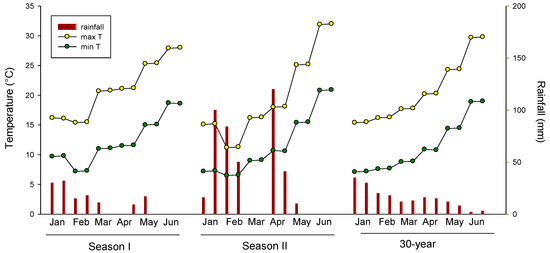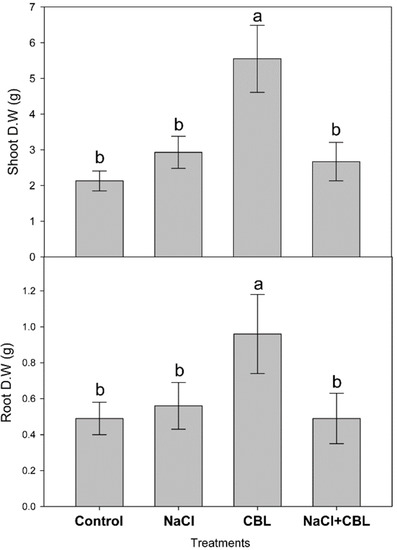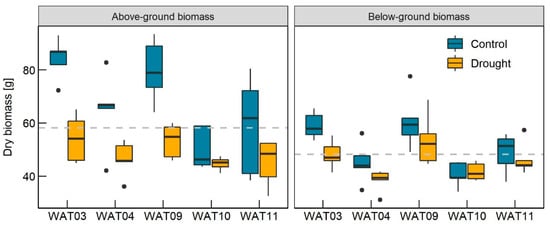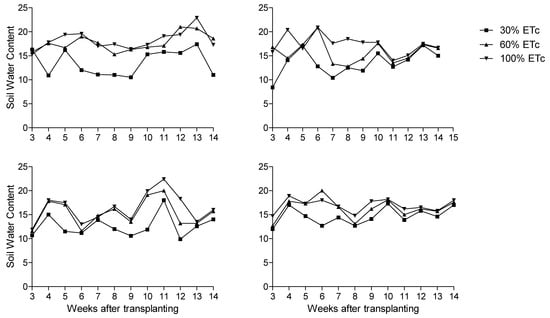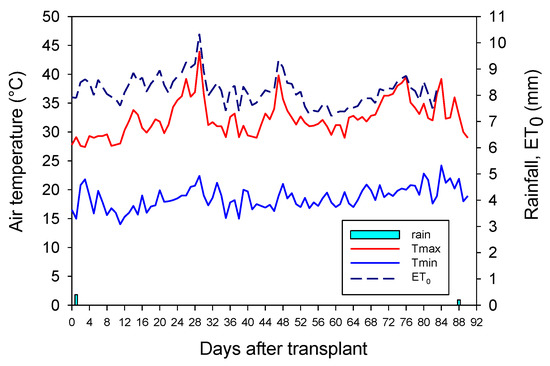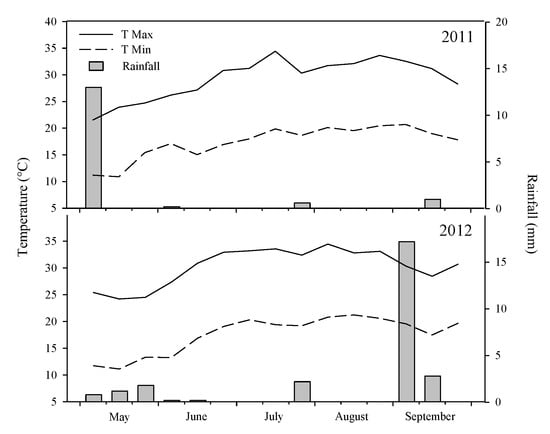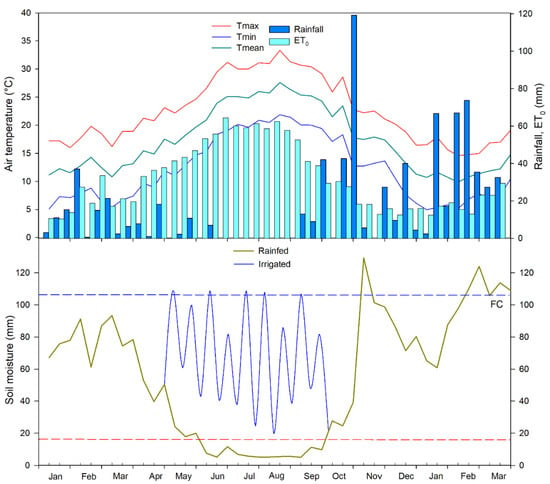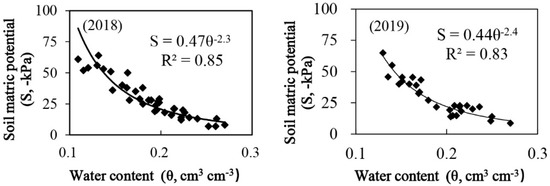Towards Sustainable Intensification of Crop Production—Yield Gaps and Water Use Efficiency in Farming Systems
A topical collection in Agronomy (ISSN 2073-4395). This collection belongs to the section "Water Use and Irrigation".
Viewed by 26920Editor
Interests: irrigation; sustainability; water resources management; agriculture; crop management; sustainable agriculture; crop production; organic farming
Topical Collection Information
Dear Colleagues,
In the last decades, many advances have been made regarding sustainable crop production intensification, mainly with the aim of increasing or maintaining yield. However, the decrease in available water around the world—which will be more evident in the future based on the predictions of climate change—as well as the parallel decrease in irrigated land raises the alarm and necessitates the development of more efficient water use techniques in farming systems. The present Topical Collection will focus on the recent advancements in the wide field of sustainable intensification of crop production and water use efficiency. Research papers, communications, and review articles are all welcome. In particular, we encourage contributions covering agronomic practices and the management of water, without neglecting sustainability principles and toward improved crop water use efficiency. Particular attention will be given also to research involving the selection of species and cultivars compatible with agro-techniques designed to reduce evapotranspiration or have tolerance to water scarcity, as well as the progress of genetics applied to the agronomy of cropping systems. Attention will also be given to studies that allow improvements in water use efficiency of farming systems utilizing information communication technologies (e.g., decision support systems and precision irrigation)
Dr. Anita Ierna
Collection Editor
Manuscript Submission Information
Manuscripts should be submitted online at www.mdpi.com by registering and logging in to this website. Once you are registered, click here to go to the submission form. Manuscripts can be submitted until the deadline. All submissions that pass pre-check are peer-reviewed. Accepted papers will be published continuously in the journal (as soon as accepted) and will be listed together on the collection website. Research articles, review articles as well as short communications are invited. For planned papers, a title and short abstract (about 100 words) can be sent to the Editorial Office for announcement on this website.
Submitted manuscripts should not have been published previously, nor be under consideration for publication elsewhere (except conference proceedings papers). All manuscripts are thoroughly refereed through a single-blind peer-review process. A guide for authors and other relevant information for submission of manuscripts is available on the Instructions for Authors page. Agronomy is an international peer-reviewed open access monthly journal published by MDPI.
Please visit the Instructions for Authors page before submitting a manuscript. The Article Processing Charge (APC) for publication in this open access journal is 2600 CHF (Swiss Francs). Submitted papers should be well formatted and use good English. Authors may use MDPI's English editing service prior to publication or during author revisions.
Keywords
- sustainability
- WUE
- water saving
- conservation agriculture
- irrigation
- crop breeding
- decision support systems, precise irrigation
Planned Papers
The below list represents only planned manuscripts. Some of these manuscripts have not been received by the Editorial Office yet. Papers submitted to MDPI journals are subject to peer-review.
Title: Tuber yield and water use efficiency in potato as affected by water deficit and planting date in a Mediterranean environment
Authors: Anita Ierna1,*, Giovanni Mauromicale
Affiliation: 1 Institute of BioEconomy – National Research Council, via Paolo Gaifami 18, 95126, Catania, Italy, 2 Department of Agriculture, Food and Environment, University of Catania, Via Valdisavoia, 5 95123, Catania, Italy
Title: Deficit irrigation on different guar genotypes (Cyamopsis tetragonoloba (L.) Taub.): effects on seed yield and water use efficiency
Authors: Giovanni Avola1, Calvin Trostle2, Orazio Sortino3, Ezio Riggi1*, Fabio Gresta4
Affiliation: Institute of BioEconomy – National Research Council, via Paolo Gaifami 18, 95126, Catania, Italy, 2 Texas A&M AgriLife Extension, Lubbock, TX, USA, 3 Department of Agriculture, Food and Environment, University of Catania, Via Valdisavoia, 5 95123, Catania, Italy, 4 Department of Veterinary Sciences, University of Messina, Polo Universitario Annunziata, 98168, Messina, Italy
Title: Biomass, water relations and gas exchange of Miscanthus x giganteus in Mediterranean environment
Authors: Corinzia Sebastiano Andrea1, Testa Giorgio1, Patanè Cristina2, Cosentino Salvatore Luciano1,2, Scordia Danilo1
Affiliation: 1 Dipartimento di Agricoltura, Alimentazione e Ambiente, Università degli Studi di Catania, 2 CNR-Istituto per la BioEconomia (IBE)
Title: Physiological and agronomic response of processing tomato as affected by deficit irrigation at critical stages in a semi-arid environment
Authors: Cristina Patanè1,*, 2, Giorgio Testa2, Danilo Scordia2, Salvatore Luciano Cosentino1,2. Corinzia Sebastiano Andrea
Affiliation: 1 CNR-Istituto per la BioEconomia (IBE), via Paolo Gaifami 18, 95126, Catania, Italia 2 Dipartimento di Agricoltura, Alimentazione e Ambiente, Università degli Studi di Catania, Via Valdisavoia, 5 95123, Catania, Italia
Abstract: Cristina Patanè1,*, 2, Giorgio Testa2, Danilo Scordia2, Salvatore Luciano Cosentino1,2. Corinzia Sebastiano Andrea





